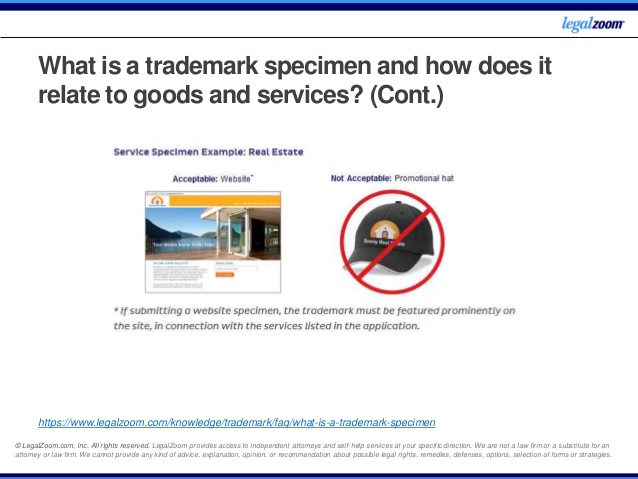
Proper Use of Web Pages as Trademark Specimens
© 2009, Gallagher & Dawsey Co., LPA
March 2009
Introduction
In order to obtain a trademark registration, an applicant must provide proof that the trademark is being used in commerce for the associated goods. This proof of use is satisfied with what is known as a “specimen” of use. Acceptable specimens for trademarks are generally labels, tags, or containers for the goods, or a display closely associated with the goods. With the recent explosion of business-to-consumer e-commerce, many trademark applicants want to provide their proof of use by submitting a web page that displays their goods. While web pages are perfectly acceptable specimens, all too often the trademark applicant fails to provide the necessary information on their web page to satisfy the legal requirements.
Requirements for Web Page Specimens for Goods
In order for a web page to be considered an acceptable specimen for goods, the law requires the web page to show the following: 1) a picture of the good; 2) prominent use of the trademark such that the mark is readily associated with the good; and 3) means for ordering the good. TMEP Section 904.03(i).
The means for ordering the good must be more than an advertisement or simple listing of a phone number, internet address, or mailing address; it must include an offer to buy the good combined with a means to accept the offer, or other specific instructions on how to order the good. This particular requirement can be easily satisfied by providing an ordering link such as an “order now” or “add to cart” link.
Invalid Web Use of Trademarks for Goods
A specimen where the mark is not closely associated with the good will be found unacceptable in establishing a commercial use of the mark. For example, in In re Supply Guys, Inc., 86 USPQ2d 1488 (TTAB 2008), the Trademark Trial and Appeal Board affirmed the trademark examining attorney’s refusal to register the mark “Leading Edge Toners” for toner supplies because the use of the mark on the specimens failed to function as a trademark. Originally, the trademark applicant provided a specimen that consisted of a Federal Express shipping label with “Leading Edge Toners” as a portion of the return address. The Trademark Office rejected this specimen and noted that the use of the trademark on the mailing label functioned merely as a trade name, and not as a trademark associated with a particular good.
In an attempt to overcome the examining attorney’s refusal of the first specimen, the trademark applicant submitted a substitute specimen consisting of a web page that featured the “Leading Edge Toners” mark in four different locations. The first use was the web page URL address. However, internet addresses do not typically function as trademarks for the goods sold on a particular web site; rather, they are often merely an informational indication of the domain name address used to access the web site.
The remaining three uses of the mark on the web page were also found invalid for failing to function as a trademark. On the web page, the trademark applicant used the “Leading Edge Toners” mark in connection with other trademarks that actually identified the source of the relevant goods. For example, one use consisted of the phrase “Leading Edge Toners Best Price For Tektronics Toners and Xerox Ink.” The Trademark Office found that this use of the mark would tend to indicate to purchasers that the owner of the web site was a retailer of toner supplies, but would not view “Leading Edge Toners” as a trademark for toner supplies. Thus, the web page specimen was refused because these four uses of “Leading Edge Toners” did not function as a trademark.
Conclusion
Web pages may be used as acceptable specimens to establish proof of use of a trademark for goods. However, the online business must be careful to ensure that the web page specimen meets the applicable legal requirements. In addition to the legal requirements noted above, it is always good practice to make sure the trademark stands out from the surrounding text, and to provide an indication that the mark is intended as a trademark. This can be accomplished by using large fonts, bold font, or italics, and especially, using the superscript trademark symbol TM immediately after the mark.
